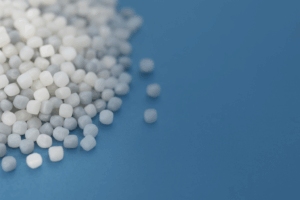 High-Density Polyethylene (HDPE) remains a cornerstone of the plastics industry, thanks to its excellent chemical resistance, high tensile strength, and versatility across processing technologies. As demand continues to grow, formulators and process engineers have a unique opportunity to leverage new resin chemistries, optimize processing parameters, and integrate recycled content while maintaining part performance.
High-Density Polyethylene (HDPE) remains a cornerstone of the plastics industry, thanks to its excellent chemical resistance, high tensile strength, and versatility across processing technologies. As demand continues to grow, formulators and process engineers have a unique opportunity to leverage new resin chemistries, optimize processing parameters, and integrate recycled content while maintaining part performance.
Market & Growth Outlook
Global HDPE demand is projected to grow at 4–5% CAGR through 2030, driven by packaging, infrastructure, and automotive applications. Asia-Pacific remains the dominant consumer, but regulatory mandates for recycled content in Europe and North America are spurring innovation in high-performance PCR blends.
Polymerization & Resin Innovations
HDPE resins are commonly produced using slurry, solution, or gas-phase polymerization with Ziegler-Natta or metallocene catalysts. The choice of process impacts molecular weight distribution (MWD) and density, which in turn influence stiffness, impact strength, and environmental stress crack resistance (ESCR).
- Multimodal HDPE: By tailoring MWD, producers can deliver grades with excellent balance of stiffness and toughness, ideal for blow-molded containers and large-diameter piping.
- Metallocene-Catalyzed HDPE: Offers narrow MWD, improved toughness, and enhanced ESCR — useful in applications where slow crack growth resistance is critical.
Processing Considerations
HDPE is widely processed via blow molding, injection molding, extrusion, and rotational molding. Advances in resin technology have allowed for:
- Shorter cycle times with faster crystallization kinetics.
- Improved melt strength for extrusion blow molding, reducing parison sag and allowing light weighting.
- Enhanced ESCR performance, critical for containers storing detergents, agrochemicals, or industrial fluids.
Formulators should monitor Melt Index (MI) carefully to balance processability with mechanical properties, particularly when blending virgin and PCR resins.
Discover Material Selection with Prospector Premium, learn more here!
Sustainability & Recycling Trends
HDPE’s recyclability remains a key differentiator. R&D efforts are focused on:
- Improved compatibilizers to blend PCR with virgin resin without sacrificing mechanical strength.
- Decontamination technologies that allow food-grade PCR for direct food contact applications.
- Chemical recycling methods (e.g., pyrolysis) that return HDPE waste to monomer feedstocks, offering near-virgin quality resin and closed-loop potential.
Testing & Quality Control
For engineers, robust testing is critical to ensuring performance. Key tests include:
- Environmental Stress Crack Resistance (ASTM D1693): Essential for packaging exposed to surfactants and chemicals.
- Slow Crack Growth Resistance (PENT/ASTM F1473): Important for pressure pipe applications.
- Density & Melt Flow Index (ASTM D1505/D1238): To confirm grade selection and process consistency.
Opportunities for Manufacturers & R&D Teams
- Evaluate new multimodal and metallocene-catalyzed HDPE grades for challenging applications.
- Investigate PCR blending strategies that meet customer sustainability goals and regulatory requirements.
- Work with resin suppliers to optimize processing windows for cycle time reduction and energy efficiency.
HDPE continues to be a “workhorse” resin — but one with plenty of room for innovation. As regulatory and sustainability pressures rise, manufacturers and formulators who invest in resin selection, processing optimization, and recycling integration will be best positioned for success.
Resources:
- IHS Markit, Global Polyethylene Market Report, 2024
- PlasticsEurope, Plastics – The Facts 2024
- American Chemistry Council, Circularity in Plastics: Mechanical and Chemical Recycling Trends, 2024
- Smithers, Future of Polyethylene to 2030
- ICIS, HDPE Resin Pricing and Market Outlook, 2024
- ASTM International Standards: D1693, D1238, D1505, F1473
The views, opinions and technical analyses presented here are those of the author or advertiser, and are not necessarily those of ULProspector.com or UL Solutions. The appearance of this content in the UL Prospector Knowledge Center does not constitute an endorsement by UL Solutions or its affiliates.
All content is subject to copyright and may not be reproduced without prior authorization from UL Solutions or the content author.
The content has been made available for informational and educational purposes only. While the editors of this site may verify the accuracy of its content from time to time, we assume no responsibility for errors made by the author, editorial staff or any other contributor.
UL Solutions does not make any representations or warranties with respect to the accuracy, applicability, fitness or completeness of the content. UL Solutions does not warrant the performance, effectiveness or applicability of sites listed or linked to in any content.
